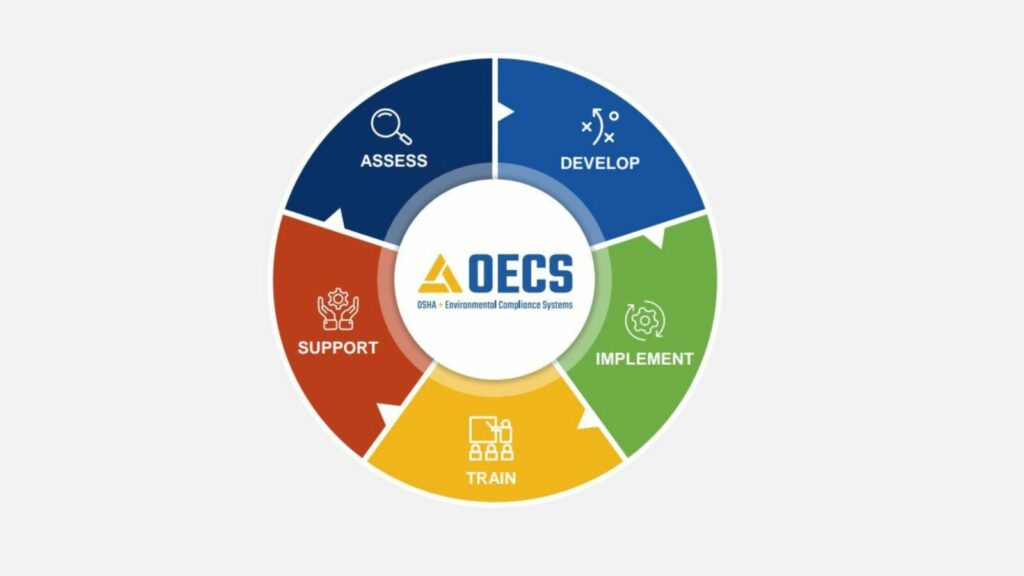The classic arcade game, Whac-A-Mole, is a great example of a game that simulates how many of us work and how many organizations function. The game is simple. With a mallet in hand, the player is faced with 5 holes, each hole having a mole ready to pop up.
When a mole pops up, the player must hit it with a mallet to score. As the game progresses, the moles pop up faster and faster to increase the challenge and complexity of the game. If a player is good, he or she can put the moles back in their hole, at least temporarily.
Moles = Problems
In the real game of whack-a-mole the same issues keep popping up over and over, no matter how hard you whac them. As soon as you solve the issue, another one appears!
At times, safety management can feel just like a game of whac-a-mole: Identify the safety hazard, react quickly, do whatever is needed to make the issue go away and move onto the next one.
Or, rather than being proactive, the safety leader waits for something he or she believes to be wrong to happen, and “whacks” the behavior with words and/or actions, rather than having a process to solve the root cause.
The act of dealing with such matters in a piecemeal manner without achieving a complete solution is a terrible waste of time and resources. So how can you create a process that resolves your reoccurring safety issues?
The OECS Proven Safety Process
A process is critical to achieving consistent results time and time again. Without a process, you’re required to create a method of solving a problem every single time you encounter one.
Instead, a proven process that is followed consistently will help you resolve your safety issues successfully. Below is the OECS Proven Safety Process. You can apply this internally if you have experienced safety professionals. However, an outside safety professional can provide a new set of eyes to help you achieve and exceed safety compliance, ensuring your company’s safety goals are met.

ASSESS: This is just like having an outside accounting firm audit your inhouse accounting department. For safety, assessing must be done onsite – evaluating the quality of your safety programs, determining any safety gaps, walking the facility or job site, interacting and talking with employees – to truly get a good assessment of where things stand before taking action.
DEVELOP: Once you have a good baseline assessment of your company’s safety, it’s now time to develop a customized Safety Action Plan – checking for compliance with all OSHA regulations, identifying safety training needs, determining how to measure progress and structuring safety responsibilities at all levels in the organization.
IMPLEMENT: Once the Safety Action Plan is in place, it’s critical to establish roles, responsibilities and expectations for those implementing the safety action plan. Strong safety leaders must ensure expectations are clearly understood. If a safety committee is required, then training and support should be provided for group effectiveness. And, regular audits from your safety consultant can ensure your safety program is on track. If you don’t inspect what you expect, you’ll have safety gaps!
TRAIN: You can put posters up all over the workplace, but they can become meaningless unless the organization puts effective training behind every single initiative. This is key: Deliver customized training with polished presenters who can engage the audience with stories, demonstrations, hands-on learning, role-playing and other strategies.
SUPPORT: Implementing a Safety Action Plan takes commitment and could easily fall apart if there’s not continued support to address issues as they arise. Rather than whac-a-mole safety management, support ensures the effectiveness of your safety program, with providing written safety audits, attending safety committee meetings, reviewing the EMR/300 log and being OSHA ready.
A proven safety process that’s repeatable and scalable will lay a foundation for building a strong safety culture with tangible impacts on organizational success, such as reduced absenteeism due to injuries, higher productivity and lower turnover rates – as retention and morale is higher at companies with fewer injuries.
Organizations with strong safety cultures also benefit from earning an enhanced reputation and increased trust among clients, partners and employees. Finally, there are huge business impacts, including lower workers compensation and insurance claims – not to mention reduced OSHA fines. It’s a significant accomplishment if an OSHA investigator shows up at the door, walks through your facility for a couple of hours and doesn’t find anything warranting a citation!
We Wrote the Book
Our mission at OECS is to inspire strong safety cultures that keep employees returning home safe. If you’re interested in learning more, check out our book, Building a Strong Workplace Safety Culture: The 5 C’s of Safety. If you’d like a free copy, click HERE.
By following a Proven Safety Process with solid safety leadership, the groundwork is laid for building a strong safety culture – where safety can be leveraged as a catalyst for strengthening the overall company culture, not just safety!
 763.417.9599
763.417.9599
